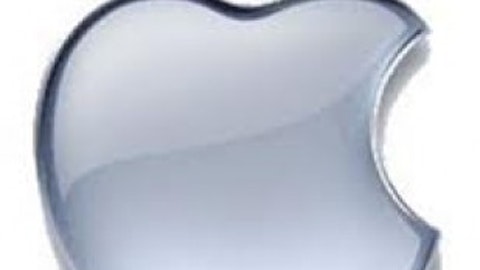3D Systems Corporation (NYSE:DDD) & Stratasys, Ltd. (NASDAQ:SSYS) have been printing money so fast that they’re showing up the Fed! I was so sure of their ability to churn out the green last June that I did what I make a point not to do: initiate communication with a friend or relative about particular stocks using definitive terms.

The stocks of the two major 3-D printing companies have returned an average of nearly 60% in the 9-1/2 months since I sent my June 27 “buy!” note to my financial planner relative, who foolishly didn’t buy them for himself.

Granted, the two stocks had big ‘up’ days on April 9 and 10. However, they’ve had nice gains even before those two days (44% for Stratasys and 38% for 3D Systems Corporation (NYSE:DDD) vs. 17% for the S&P 500).
What happened June 27 that made me more confident in the industry? 3D Systems Corporation (NYSE:DDD) announced that its systems received certification to use in a broad range of healthcare products. That’s a big vote of confidence. There’s also much money in healthcare.
A snapshot of the players and then a look at the numbers…
3D Systems
3D Systems Corporation (NYSE:DDD) is the largest ($3.2 billion market cap) company in the industry, and was the first-mover. Founder Charles Hull invented 3-D printing, which he termed “stereolithography” in his 1986 patent, and which is now often referred to as “additive manufacturing” because objects are built layer by layer. Hull is still on board (pun not intended) — as Chief Technology Officer.
The company has the broadest portfolio of 3-D printers. It has products for the industrial, commercial, and consumer markets. It also has an on-demand custom parts manufacturing business.
Stratasys
Stratasys, Ltd. (NASDAQ:SSYS), with a market cap of $3.0 billion, was founded in 1989 when Scott Crump and his wife invented fused deposition modeling, an additive manufacturing technology. Crump served as CEO until last year, when the company merged with Israel-based Objet. David Reis, Objet’s CEO, became the CEO of the combined entity. Crump remained Chairman of the Board, and took on the position of head of global innovation.
The company’s initial focus was the commercial and industrial markets. However, it also has consumer products.
ExOne Co (NASDAQ:XONE)
The $480 million market cap company was founded in 2005, and went public in February 2013. ExOne Co (NASDAQ:XONE) is focused on high-end ($500,000+), industrial-use systems. Its systems can produce production-grade products from industrial metals, glass, and sand (molds). It also provides contract design and production services.
The stock’s up 35% from its opening price on IPO day, a more realistic figure for most investors than the IPO price.
Organovo Holdings, Inc. (NASDAQOTH:ONVO)
This is a more speculative stock. The $235 million market cap company, which was founded in 2007 and IPO’d in February 2012, develops 3-D bioprinting technology for creating functional human tissues for research and medical applications.
The stock price has had a wild ride: It opened at $1.65 on IPO day, soared to more than $10 per share last summer, and now trades at about $3.77 per share.
Xerox Corporation (NYSE:XRX)
Yup, Xerox Corporation (NYSE:XRX)! The once-mighty photocopier king, and inventor of the laser printer and graphical user interface (popularized by Apple Inc. (NASDAQ:AAPL)), among other innovations, is working on what would be the ultimate 3-D printing breakthrough.
The current 3-D printers can manufacture objects made from a vast array of materials, but there’s one notable thing they can’t spew out — electronic circuitry. That’s a biggie in today’s world, where electronics are embedded in even commonplace products. Xerox Corporation (NYSE:XRX)’s Palo Alto Research Center, or PARC, is working on this technology, according to a NYT’s article, “Tiny Chiplets: A New Level of Micro Manufacturing.”
How do the 3-D players stack up by the (2-D) numbers?
(I’m including Xerox, though its tech is in the early R&D stage.)
| Company | Trailing P/E | Fwd P/E | 5-Yr PEG | 3-Yr Avg Rev Growth | 3-Yr Avg EPS Growth | Net Margin (ttm) | ROE (ttm) | Debt/Equity (mrq) |
| 3D Systems | 49 | 27.3 | 1.2 | 46.3 | 249 | 11 | 10.6 | 0.18 |
| Stratasys | 216 | 32.4 | 1.3 | 29.8 | 21.6 | 4.3 | 1.0 | 0 |
| ExOne | N/A | 258 | N/A | N/A | N/A | (35) | N/A | 0 |
| Organova | N/A | N/A | N/A | 23* | N/A | (511)** | N/A | N/A |
| Xerox | 10.5 | 7.8 | 1.4 | 13.8 | 17.0 | 5.3 | 10 | 0.70 |
Sources: Yahoo! Finance & Morningstar. All figures percentages, except PEs, PEGs, and D/E. *1-yr revenue growth; **operating margin.
3D Systems Corporation (NYSE:DDD) and Stratasys, Ltd. (NASDAQ:SSYS) are the only 3-D printing companies (excluding Xerox) that are profitable. 3D Systems has the better growth rates, margin, and ROE. Notably, its operating margin has been expanding: 2.7% (2009), 13.1% (2010), 15.2% (2011), and 17.1% (2012). Its net margin expanded until 2011, but was down in 2012. Cash flow has been moving in the right direction, too.
Stratasys, Ltd. (NASDAQ:SSYS)’ operating margins during the same period: 5.9% (2009), 11.5% (2010), 18.6% (2011), and 8% (2012). The merger with Objet affected 2012 GAAP earnings, and hence, margins.
ExOne has a positive forward P/E (albeit huge), meaning analysts expect it be profitable this year. Given its focus, it could carve itself out a niche.
Organova is very speculative; I mention it mainly for awareness purposes.
As might be expected for these volatile stocks, betas are high: 2.1 for 3D Systems and 1.9 for Stratasys (the others are too new to have betas). Short interest is also high; 23% of float for 3D Systems and 13% for Stratasys, Ltd. (NASDAQ:SSYS) is sold short.
Foolish bottom line
There’s little doubt that 3-D printing will be a major disruptive technology. The industry is expected to grow at a 25+% annual clip for the next six or more years.
That said, identifying the eventual winner or winners is especially difficult with emerging technologies. Thus, those interested in investing in 3-D printing might consider buying a couple companies to cover more bases. I’m not suggesting investing more than you might otherwise, just that you divide what you’d invest in one stock into two, or perhaps three. One huge winner will more than offset one or two so-so stocks or even losers.
While both major 3-D printers are profitable, they’re also quite volatile. They’re best suited to those with higher-risk tolerances.
BA McKenna has no position in any stocks mentioned. The Motley Fool recommends 3D Systems and Stratasys. The Motley Fool owns shares of 3D Systems and Stratasys and has the following options: Short Jan 2014 $36 Calls on 3D Systems and Short Jan 2014 $20 Puts on 3D Systems.

